Optimum No Rinse is a brilliant product to have in any car care kit, as it offers excellent value for money and versatility. In this article, I’ll go through how to use Optimum No Rinse (ONR) in all the best ways, including the dilution ratios so you can get the best out of your bottle.
What is Optimum No Rinse?
Optimum No Rinse is a multi-purpose car cleaning product used to maintain the exterior and interior of a vehicle. It can act as a rinse-less wash system, quick detailer spray, drying aid, glass cleaner, interior cleaner, clay bar lubricant and water softener. It is highly concentrated so can be diluted anywhere from 16:1 down to 264:1.
Dilution Ratios
Optimum No Rinse can be used for many different purposes to help clean the interior and exterior of the car. However, it must be mixed at different dilution rates to get the best results whilst still being very economical.
Optimum No Rinse Dilution Ratios (water: product)
- Rinseless washing- 256:1
- Water softener – 256:1
- Glass cleaner – 256:1
- Clay bar lubricant – 64:1
- Quick detailer – 16:1
- Drying aid – 16:1
- Interior cleaner – 256:1
- Before pre-rinsing – 256:1
- Engine bay cleaning – 16:1
To save time working out exact amount you need to add to your bottle or bucket, check out the last section of this article for all the conversions of the ratios into oz/ US gallons and millilitres/ litres.
Next, I’ll be going through each use of ONR in some more detail, the pros and cons and details on how to actually use the product. I’ll also include the cost per use. This is based on using the medium sized bottle (32oz or 0.95 litre) at current market averages in the USA and in the UK to give you a good estimate.
Rinseless Wash System
Optimum No Rinse’s main use is for rinse-less washing. There are plenty of reasons why this is useful:
- It can be used when the weather is too warm for washing with shampoo and water which would quickly dry out and leave soap stains.
- It offers an excellent level of lubrication to reduce the risk of inflicting scratches and swirls to remove light levels of dust and dirt much more safely than a traditional quick detailer spray.
- You need very little water to clean the car making it perfect for those living in areas where water-usage is restricted or there is no access to free-running water.
Optimum No Rinse is clear about being a “rinse-less” rather than a “water-less” wash product. You do need some water to use the product, however it’s only around 7.5 litres or 2 US gallons.
How to Use Optimum No Rinse
- Pre-rinse the car if it is very dirty or any loose mud or debris is on the car. You may also use a snow foam or other pre-wash product at this stage if you need to.
- Add 1oz of Optimum No Rinse to 2 gallons of water. This equals 30ml in 7.5 litres.
- Soak a clean and plush microfiber towel in the solution.
- Wipe a small section of the car in a straight line.
- Dry the cleaned section with a new and dry microfiber towel.
- Repeat this process ensuring you flip the wet microfiber towel each time to expose a fresh surface. You will likely need at least 3 towels per car.
- You can reuse the solution for next time as long as it’s not become dirty during the process (it shouldn’t it you keep using a fresh towel). Just make sure you put a lid on the bucket.
It’s super simple and easy to do. Cleaning a whole car using this process will take around 30-45 minutes.
So what are the pros and cons of using ONR?
Advantages
- Uses far less water than traditional wash methods.
- Very cheap process (approximately $0.56/ £0.63 cost per bucket of diluted ONR)
- More environmentally friendly than traditional washing.
- Safe to use in direct sunlight.
- Great for areas where water-usage is limited.
- Safe for use on waxes, sealants and ceramic coated vehicles.
- It has a very pleasant scent.
Disadvantages
- Not safe for very dirty vehicles as it may cause swirl marks.
- ONR struggles more with dried bugs that may be stuck onto the car than more powerful shampoos.
There aren’t too many downsides to ONR, except that it does feel a bit unnatural if you’re used to using traditional car shampoo like myself!
APPROXIMATE COST PER USE: $0.56 and £0.63 in the UK. This produces 2 US gallons (7.5 litres) of diluted ONR. However, you can reuse this solution.
If you live in an apartment or don’t have access to a tap and power to use a pressure washer, check out my top 3 solutions to washing your car.
Clay Lubricant
If you’re using clay to decontaminate your car, then you’ll need a good lubricant to avoid inflicting scratches, swirls and marring into the paintwork. ONR is an excellent clay lubricant, and it’s become may favourite one to use.
It feels slicker than using car shampoos and it’s also much cheaper than more clay lubricants on the market. It also doesn’t add any wax or sealant to the surface so it’s a good one to use before paint correction or protection.
How to Use Optimum No Rinse as a Clay Lubricant
- Make sure the car is clean and the panels are still wet.
- Mix up a bottle of ONR at a ratio of 64:1 of water: product.
- Spray the solution liberally onto the panel and onto the clay directly.
- Clay the car as normal using light-pressure and straight-line motions and fold the clay to expose a fresh, clean side when necessary.
- Rinse the car and dry when complete.
If you’re dealing with very soft paint, then consider increasing the ratio to 32:1 or 16:1. This is still pretty economical but will offer more lubrication allowing the clay to slide over the paintwork more easily.
Here are the pros and cons of using ONR as a clay bar lubricant.
Advantages
- Very cheap alternative to traditional lubricants.
- Slicker feeling than car shampoo.
Disadvantages
- Having to spray the solution onto the panels is a bit of extra effort than using car shampoo.
APPROXIMATE COST PER USE: $0.28 in the US and £0.32 in the UK. This produces 32 oz (1 litre) of diluted ONR.
Quick Detailer
Most quick detailers on the market will cause swirl marks if they’re used on dry panels to remove dust or bird poop. Optimum No Rinse can be diluted to 16:1 (16 parts water, 1 part ONR) to produce a much more lubricated, and hence safer quick detailer spray.
How to Use Optimum No Rinse as a Quick Detailer
- Dilute the product in a spray bottle to 1:16 (16 parts water, 1 part ONR).
- Spray onto the surface and wipe with a plush, clean microfiber towel.
- Flip the towel to a dry side to dry off the area.
Here are the pros and cons to using Optimum No Rinse as a quick detailer (QD) spray.
Advantages
- Much cheaper than traditional quick detailer sprays.
- Offers more lubrication to more safely remove dust.
Disadvantages
- Does not offer any protection like most quick detailers on the market.
APPROXIMATE COST PER USE: $1.12 in the US and £1.32 in the UK. This produces 32 oz (1 litre) of diluted ONR.
Looking for some more great detailing products? Make sure you check out my recommended products page for all my current top picks.
Drying Aid
Drying aids are very useful to help prevent water spots and ensure the paintwork is properly dried after the wash process. Optimum No Rinse offers a much cheaper solution to using a traditional drying aid and is very simple to use.
How to Use Optimum No Rinse as a Drying Aid
- Dilute the product in a spray bottle to 1:16 (16 parts water, 1 part ONR).
- Spray 2-3 times per panel (working one panel at a time) onto the car after washing and rinsing)
- Spray 2-3 times onto each side of your drying towel.
- Dry the car as normal.
Here are the pros and cons of using Optimum No Rinse as a drying aid.
Advantages
- Very cheap compared to most drying aids.
- Leaves a streak-free finish.
Disadvantages
- Does not offer any extra protection like some drying aids will.
APPROXIMATE COST PER USE: $1.12 in the US and £1.32 in the UK. This produces 32 oz (1 litre) of diluted ONR.
Glass Cleaner
This is one of my favourite ways to use ONR. It’s a less common use for the product, but one that’s definitely worth trying.
All you need to do is mix up a bottle and use it like a normal glass cleaner, before or after washing the car as normal for a streak-free finish. I like it because it helps to maintain my glass coating without stripping it off or degrading it.
How to Use Optimum No Rinse as a Glass Cleaner
- Dilute Optimum No Rinse to 256:1 (256 parts water, 1 part product) in a spray bottle.
- Spray 2-3 times onto your cloth, or onto half the windscreen/ normal sized window.
- Wipe in a cross-hatch pattern.
- Flip the towel to reveal a dry side and wipe until the product has “flashed-off”.
- For best results, use a waffle-weave microfiber towel or fish-scale glass cloth (or just something a microfiber towel that isn’t very plush and fluffy).
Here are the pros and cons of using Optimum No Rinse as a glass cleaner.
Advantages
- Leaves a streak-free finish.
- Very cost-effective compared to off-the-shelf glass cleaners.
- Will not degrade any glass sealants or coatings.
Disadvantages
- Takes longer to “flash-off” than traditional glass cleaners.
- You may need something stronger for very dirty glass.
APPROXIMATE COST PER USE: $0.07 in the US and £0.08 in the UK. This produces 32 oz (1 litre) of diluted ONR.
Interior Cleaner
This is another brilliant use for ONR. Most people just use it for the car’s exterior, but it’s brilliant on the interior as a kind of “quick detailer” too!
Like all the other uses on the list, this offers a very cost-effective solution and is very simple and effortless to use. I’ve used this on plastics, glass and leather to get great results.
How to Use Optimum No Rinse on the Interior
- Dilute Optimum No Rinse to 256:1 (256 parts water, 1 part product) in a spray bottle.
- Use two-three sprays on a microfiber towel to wipe down any interior surface.
- Flip the towel to reveal a dry surface to dry the area.
ONR isn’t a heavy degreaser, so it won’t be very effective on filthy interiors. It’s more used to give a well-maintained interior a quick once-over to remove any light dust and finger-prints. Here are the main advantages of using Optimum No Rinse on the interior.
Advantages
- Very cheap compared to most interior cleaners.
- Leaves a residue-free finish and does not change the look or add a greasy feel to the surfaces.
Disadvantages
- Not very potent, so you’ll need a heavier interior cleaner on dirtier cars.
- It is not specifically designed to clean surfaces like leather so it’s safer to go for a leather cleaner on cars that aren’t very new and may not have a clear coat.
APPROXIMATE COST PER USE: $0.07 in the US and £0.08 in the UK. This produces 32 oz (1 litre) of diluted ONR.
To Pre-Rinse the Car
This one is a bit of a wild-card, but it’s an interesting one. I picked up this trick from listening to Ivan Lacroix talk about ONR on YouTube.
If you are washing the car by a traditional method, then you will always rinse it before using any contact (wash mitt) on the paint. The idea is to remove any loose dust, dirt and debris before using a wash mitt which would rub it into the paint and inflict damage.
However, this process of rinsing at high pressure using a pressure washer, can cause swirl marks. This is because the debris is still making contact with the paint, even if you are not yourself.
Applying ONR to the car before rinsing it, can help to lubricate this process. Although it won’t pre-wash the car in the same way as a snow foam or citrus pre-wash will (you’ll need to do this step after), it may be useful on very soft paintwork.
Here’s how to do it:
- Dilute ONR to 256:1 (256 parts water, 1 part product) in a spray bottle or pump sprayer.
- Apply a layer to the car and rinse after around 30 seconds.
- Continue to pre-wash the car as you usually would.
I’ve been trying this method quite a bit recently, so here are the pros and cons I’ve picked up on.
Advantages
- It may be useful on very soft paintwork, or paint that cannot be polished due to its age or fragility.
- It’s still a pretty cheap process (you need around 300ml of diluted ONR for a full car which costs only around 3p or 2 cents!)
Disadvantages
- It may be unnecessary as the damage a pressure washer inflicts is negligible to undetectable, particular on most paintwork.
- It adds time to the wash process.
APPROXIMATE COST PER USE: $0.07 in the US and £0.08 in the UK. This produces 32 oz (1 litre) of diluted ONR.
Water Softener
If you live in an area with very hard water, then adding ONR to your wash bucket with your traditional car shampoo can soften it to reduce the risk of water spotting. It also helps the wash solution to be more lubricated to reduce the risk of inflicting scratches and swirl marks.
How to Use Optimum No Rinse as a Water Softener
- Fill up your buckets with water.
- Add 1/8 oz of ONR for every 32oz of water. This equals 4ml of ONR in every litre of water.
- Add your shampoo as normal and wash the car.
Here are the main advantages and disadvantages of this technique.
Advantages
- Helps to reduce the risk of water spots.
- Adds more slickness to the shampoo.
Disadvantages
- ONR will cause the shampoo to become less “sudsy”.
- The cost per wash will increase significantly compared to using car shampoo on its own.
APPROXIMATE COST PER USE: $0.56 and £0.63 in the UK. This produces 2 US gallons (7.5 litres) of diluted ONR.
When Polishing
This is definitely a less talked-about use for ONR, but one that is well worth noting. There are several scenarios where ONR can help during the process of machine polishing the paintwork. All dilution ratios are noted as water: product.
- To remove stubborn polish residue from trim/ plastics (diluted at 16:1)
- As a pad conditioner (diluted at 256:1)
- To clean the area you are about to polish to remove any light dust (diluted at 16:1).
It’s definitely a useful product to have on hand during the paint correction process so it’s well worth keeping a couple of bottles mixed up at a 256:1 and 16:1 ratio.
How to Mix up Correct Dilution of Optimum No Rinse
Here is every common dilution ratio of ONR in various volumes. Simply choose your dilution ratio and the amount of total diluted ONR you require and add the amount in the table to your bucket or bottle containing the amount of water specified.
For the 16:1 ratios, take away the amount of ONR you need to add from the total amount required to work out how much water you need to add.
For other ratios, the difference is so minor that you can just add the total amount as water, and then add your ONR in after. Make sure you give everything a good mix before using it!
The lids on the bottles of ONR can also be used to measure out the product. Here’s how they work out.
- The cap on the 8oz (0.24 litre) bottle size holds 0.25 oz or 7.5 ml of ONR
- The cap on the 32oz (0.95 litre) bottle size holds 0.5 oz or 15 ml of ONR
- The cap on the 128 oz (3.79 litre) bottle size holds 0.5 oz or 15 ml of ONR
US Gallons and fluid Ounces conversion
| Dilution Ratio | 16 oz (1/8 gallon) | 32 oz (1/4 gallon) | 64 oz (1/2 gallon) | 128 oz (1 gallon) | 256 oz (2 gallon) |
| 16:1 | 1 oz. | 2 oz. | 4 oz. | 8 oz. | 16 oz. |
| 32:1 | 0.5 oz. | 1 oz. | 2 oz. | 4 oz. | 8 oz. |
| 64:1 | 0.25 oz. | 0.5 oz. | 1 oz. | 2 oz. | 4 oz. |
| 128:1 | 0.13 oz. | 0.25 oz. | 0.5 oz. | 1 oz. | 2 oz. |
| 256:1 | 0.06 oz. | 0.13 oz. | 0.25 oz. | 0.5 oz. | 1 oz. |
Litres and Millilitres conversion
| Dilution Ratio | 500 mL total | 1 L total | 2 L total | 5 L total | 10 L total |
| 16:1 | 31.5 mL | 62.5 mL | 125 mL | 313 mL | 625 mL |
| 32:1 | 15.5 mL | 31.5 mL | 62.5 mL | 156.5 mL | 312.5 mL |
| 64:1 | 8 mL | 16 mL | 31.5 mL | 78 mL | 156 mL |
| 128:1 | 4 mL | 8 mL | 16 mL | 39 mL | 78 mL |
| 256:1 | 2 mL | 4 mL | 8 mL | 19.5 mL | 39 mL |
Thanks for checking out this article, I hope you’ve found it useful! Don’t forget to take a look at my recommended car care products and my YouTube channel for more tips and product reviews.
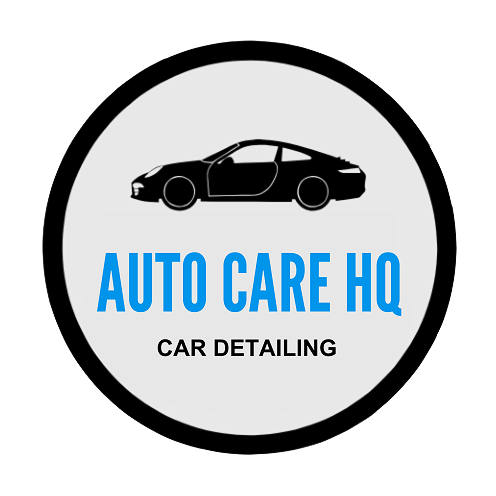
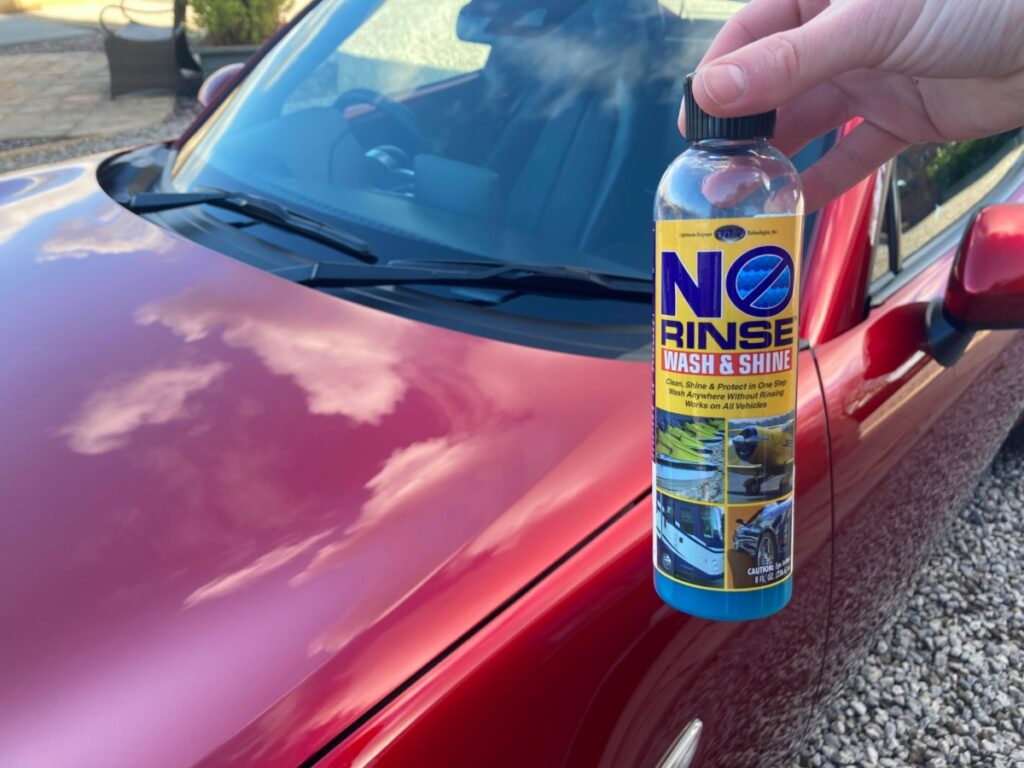
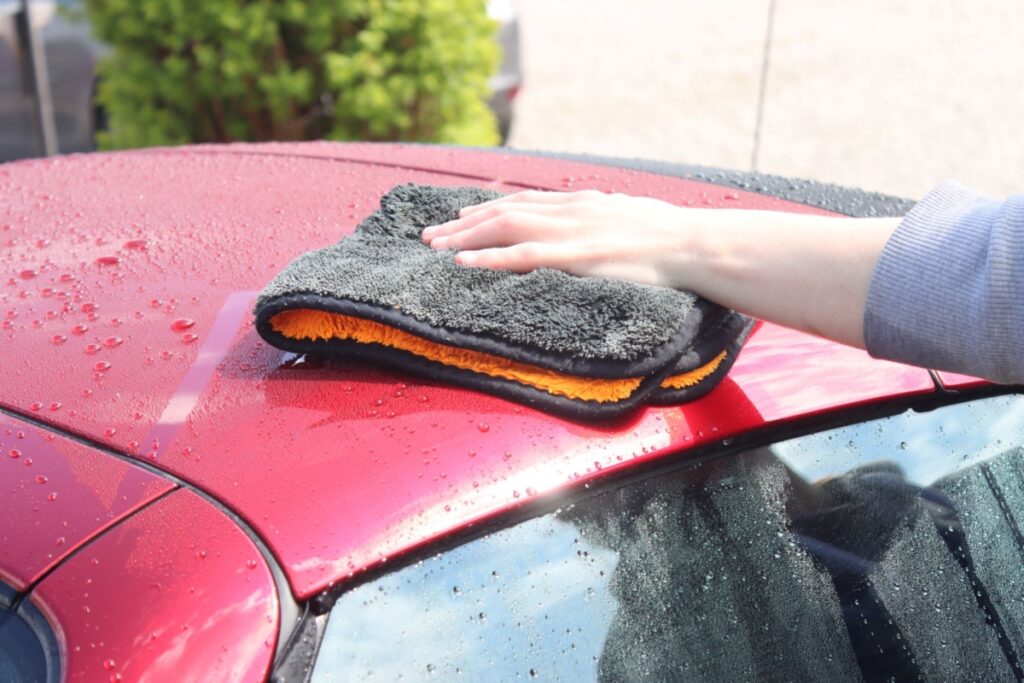
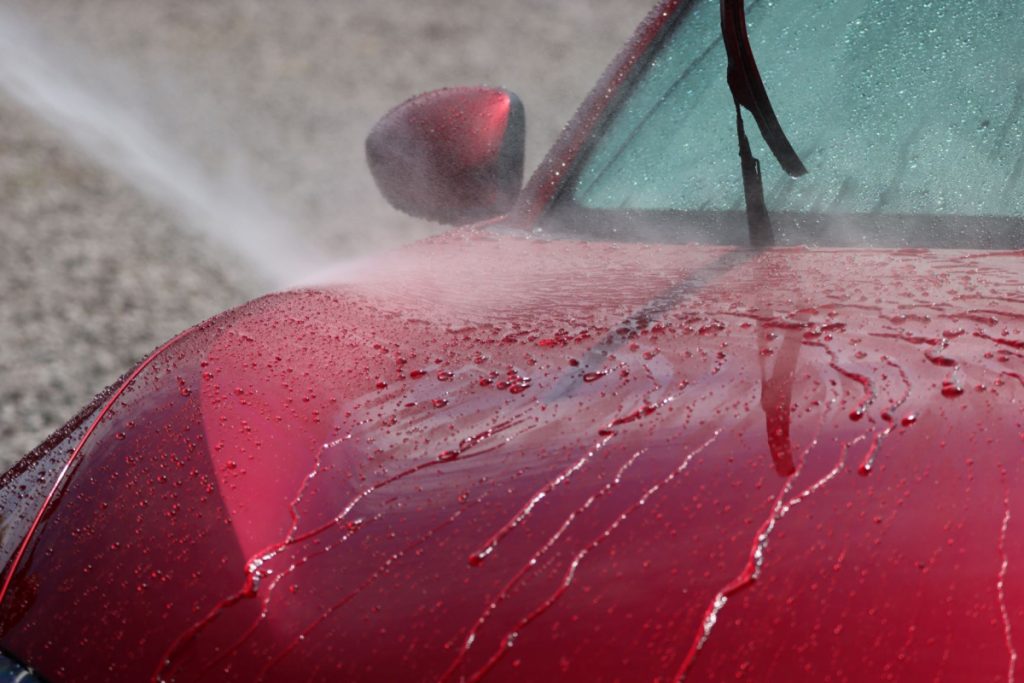
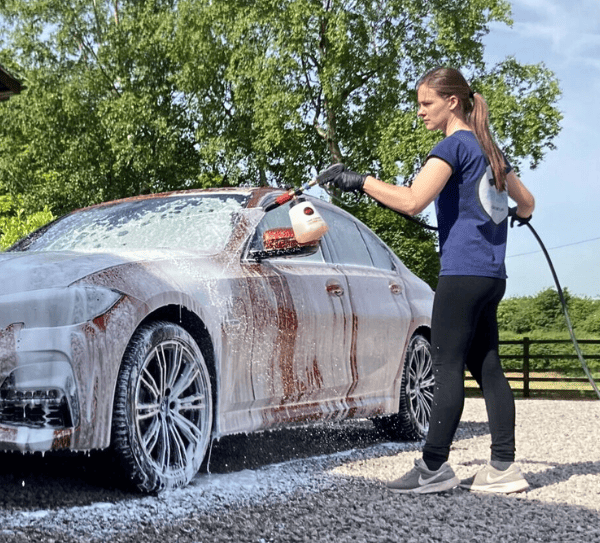
Hi Heather,
I found you on YouTube, and I wanted to say that I find your website very useful and helpful. Thank you for being so willing to help out and share this awesome information.
ONR has lots of use cases, but for whatever reason, the company makes it nigh impossible to find all the dilution ratios/use cases for this product lol.
Cheers from Ontario, Canada.
Thanks very much for taking the time to leave a comment. I’m very glad you’ve found the content helpful!
Thanks,
Heather